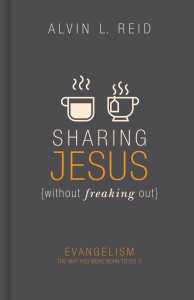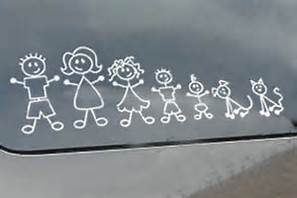
At the heart of NGM lies the Great Commandment (Mat 22:35-40) and the Great Commission (Mat 28:19-20). Does the American Dream concept line up with either of the GC’s?
Allow me to tackle the idea of the American Dream first.
One version of the American Dream illustrates a solid family structure with mom in the kitchen, dad grilling out, and kids playing in the yard behind a white picket fence. Granted, there are some homes that still paint that picture today, but I would submit that those pictures are becoming harder to find. Remember when you visited a family in their home and spotted family pictures on the wall or on the shelf? Whereas the traditional nuclear family used to be the social norm, it now appears as abnormal. Brokenness and dysfunction are the themes that rule our day.
A second version of the American Dream states that if you work hard enough, you can be whatever you want to be. Elements of this version are still at work today. It is good to dream. Many inventions would have never been created without the ingenuity or ideas of the dreamer. And Americans often do dedicate themselves to becoming what they have always dreamed about and then later find themselves living their dream out. These are all good things. But what about those dreamers who will never have the ability, talent, or opportunity to do what they were told they always could do. I dreamed of playing in the NBA as a child and dedicated my early life to accomplishing that goal. But my height coupled with my vertical leap (I can jump, but not as high as an NBA player) would never allow me live that dream. At some point, reality sets in and some dreams do die. You can’t always be whatever you want to be.
I am sure there are other versions of the American Dream but I am not going to tackle all of these today. Suffice to say, some of us need to tear the picket fence down, take the pictures off the wall, and or let reality set in. In other words, we need to admit that there are aspects of the American Dream that could shatter before our teary eyes. Yes, in some ways, we were given a lie and we need to call it out for what it is. The American Dream is not all fantasy as some do achieve it. However, the American Dream pales in comparison to the great call of Jesus to love God, love others, and to make disciples of all nations. The American Dream is for Americans and limited in scope. The Great Commission is for all nations. The American Dream is for the here and now. The Great Commission encompasses all time and its efforts will echo for an eternity. The American Dream pleases the self. Obeying the GC’s bring glory to God. Let’s choose to do next generation ministry and fulfill the GC’s over and beyond any call to live the American Dream.






 The 2016 Rio de Janeiro Olympics hosted by Brazil finished up ten days ago. Perhaps no other Olympic sport competition captures the essence of Next Generation Ministry (NGM) better than the 4×100-meter relay race.
The 2016 Rio de Janeiro Olympics hosted by Brazil finished up ten days ago. Perhaps no other Olympic sport competition captures the essence of Next Generation Ministry (NGM) better than the 4×100-meter relay race.
